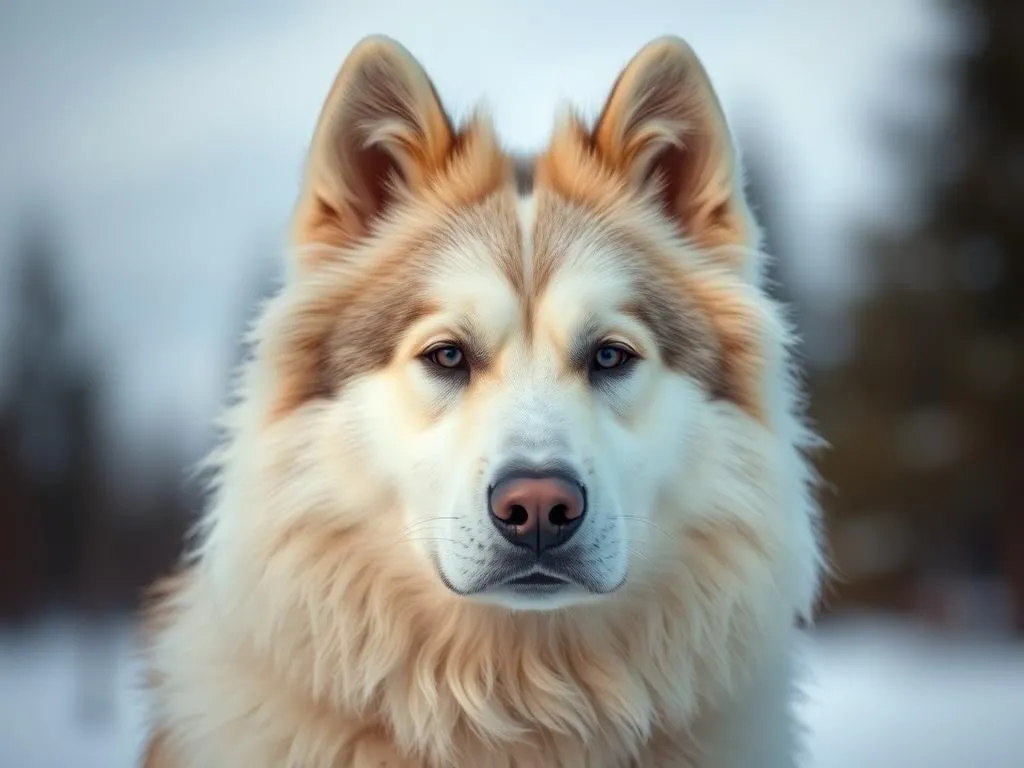
Introduction
Understanding dog breeds is crucial for prospective pet owners and enthusiasts alike. Each breed carries its own unique traits, history, and care requirements that can significantly impact family dynamics and lifestyle choices. Among the various breeds, the Canadian Eskimo Dog stands out as a remarkable and culturally rich canine companion. This article aims to provide a comprehensive overview of the Canadian Eskimo Dog, exploring its historical background, physical characteristics, health needs, training, and suitability for family life. By the end of this article, readers will have a clearer understanding of this breed and whether it aligns with their lifestyle and preferences.
Understanding Dog Breeds
Definition of Dog Breeds
A dog breed is a specific strain of domestic dog, characterized by distinct physical and behavioral traits. The concept of dog breeding has a long history, dating back thousands of years when early humans domesticated wolves. Over time, selective breeding led to the development of various breeds tailored for specific functions, such as herding, hunting, and companionship.
Importance of Dog Breeds
Dog breeds play a vital role in human society, offering companionship, protection, and assistance in various tasks. Different breeds can cater to different lifestyles and family needs, affecting everything from exercise requirements to grooming needs. Understanding these differences can help potential dog owners choose a breed that fits seamlessly into their lives.
Factors Influencing Dog Breeds
Several factors influence the traits and characteristics of dog breeds:
- Genetic Diversity: The genetic makeup of a breed determines physical traits and behaviors, such as size, coat type, and temperament.
- Environment: Certain breeds are better suited for specific climates and living conditions, influencing their adaptability and comfort levels.
- Purpose: Many breeds were developed for specific tasks, such as herding, hunting, or companionship, which influences their behavior and care requirements.
The Canadian Eskimo Dog: An Overview
Historical Background
The Canadian Eskimo Dog is one of the oldest recognized dog breeds in North America, with roots tracing back over 4,000 years. Developed by the Inuit people, these dogs were essential for survival in the harsh Arctic environment. They served multiple roles, including sled pulling, hunting, and guarding. Their deep connection to Inuit culture highlights their significance in history and community life, making them more than just pets; they were invaluable working partners.
Physical Characteristics
The Canadian Eskimo Dog is a medium to large breed, known for its strong build and endurance.
- Size and Weight: Adult males typically weigh between 85 to 110 pounds, while females range from 60 to 90 pounds.
- Appearance: They possess a thick, double coat that can withstand extreme cold, with colors ranging from white, black, grey, and brown. Some may even have markings or patterns, adding to their unique appearance.
- Distinctive Features: Their erect ears and bushy tail, which curls over their back, contribute to their striking looks. These features not only enhance their aesthetic appeal but also play practical roles in their adaptation to cold climates.
Temperament and Personality
The temperament of the Canadian Eskimo Dog is generally friendly, intelligent, and loyal. They are known for being protective of their families and can be reserved around strangers.
- Compatibility with Families: This breed typically does well in family settings, especially with active households. Their playful nature makes them good companions for children, provided they receive proper training and socialization.
- Interactions with Other Pets: While they can coexist with other dogs and pets, early socialization is essential to ensure harmony in the household.
Health and Care of Canadian Eskimo Dogs
Common Health Issues
Like all breeds, the Canadian Eskimo Dog is prone to certain health conditions. Some common health issues include:
- Hip dysplasia
- Progressive retinal atrophy (PRA)
- Obesity
Regular veterinary check-ups are crucial to monitor their health and address any issues early on. Responsible breeders will also conduct health screenings to minimize the risk of genetic disorders.
Nutritional Needs
A balanced diet is essential for the overall health of the Canadian Eskimo Dog. Recommendations include:
- High-Quality Dog Food: Look for food that lists meat as the first ingredient and meets the nutritional guidelines set by veterinary associations.
- Dietary Restrictions: Some dogs may have food allergies or sensitivities, so it’s essential to monitor their reactions to new foods and consult with a veterinarian for tailored dietary advice.
Exercise Requirements
This breed is known for its high energy levels and requires ample exercise to stay healthy and happy.
- Physical Activity: Daily walks, runs, and playtime in a secure area are ideal. Engaging in activities like sledding or agility training can also be beneficial.
- Recommended Types of Exercise: Activities that challenge their physical and mental abilities are ideal, as they thrive on stimulation.
Grooming and Maintenance
The grooming needs of the Canadian Eskimo Dog can be demanding, especially during shedding seasons.
- Grooming Needs: Regular brushing is necessary to manage their thick coat and minimize shedding. During shedding seasons, more frequent grooming may be required.
- Seasonal Considerations: Their coat helps regulate body temperature, so it’s essential to monitor them during warmer months to prevent overheating.
Training and Socialization
Basic Training Tips
Training is an essential aspect of owning a Canadian Eskimo Dog. Early training helps establish good behavior and strengthens the bond between dog and owner.
- Importance of Early Training: Starting training at a young age is crucial, as puppies are more receptive to learning.
- Effective Techniques: Positive reinforcement techniques, such as treats and praise, work best for this breed, as they respond well to encouragement.
Socialization Strategies
Socialization is vital for the Canadian Eskimo Dog to develop into a well-rounded adult.
- Importance of Socializing: Exposure to various environments, people, and other animals helps reduce anxiety and promotes adaptability.
- Strategies for Socialization: Gradually introducing them to new experiences, such as trips to the park, training classes, and playdates with other dogs, can help them become more comfortable in different situations.
Living with a Canadian Eskimo Dog
Ideal Living Conditions
The Canadian Eskimo Dog thrives in environments that allow for plenty of physical activity and mental stimulation.
- Best Environments: They do well in rural settings with ample space to roam. While they can adapt to urban living, they require regular access to outdoor spaces for exercise.
- Space Considerations: A secure backyard is ideal for this breed, as they enjoy exploring and playing outdoors.
Family Dynamics
Integrating a Canadian Eskimo Dog into family life can be a rewarding experience.
- Interactions with Children: They generally get along well with children, especially if raised together. However, supervision is essential to ensure safe interactions.
- Compatibility with Other Pets: Early socialization helps them coexist peacefully with other pets in the home.
Lifespan and Aging Considerations
The average lifespan of a Canadian Eskimo Dog ranges from 12 to 15 years. As they age, certain considerations come into play:
- Care for Aging Dogs: Regular veterinary check-ups become even more critical, as older dogs may develop health issues that require management.
- Comfort Needs: Providing a comfortable and safe environment, along with appropriate nutrition and exercise, is vital for their quality of life.
Canadian Eskimo Dog: Adoption and Breeding
How to Adopt a Canadian Eskimo Dog
If you’re considering bringing a Canadian Eskimo Dog into your home, it’s important to find a reputable source.
- Where to Find: Look for breed-specific rescues or reputable breeders who prioritize the health and temperament of their dogs.
- Key Questions to Ask: Inquire about health screenings, temperament, and the dog’s background to ensure you’re adopting a well-socialized pet.
Responsible Breeding Practices
Ethical breeding practices are essential for maintaining the health and integrity of the Canadian Eskimo Dog breed.
- Importance of Ethical Breeding: Responsible breeders conduct health testing and follow breed standards to produce healthy puppies.
- Recognizing Puppy Mills: Be cautious of breeders who prioritize profit over the welfare of the dogs. Research and ask for references to avoid supporting unethical practices.
Conclusion
The Canadian Eskimo Dog is a breed rich in history and character, offering companionship, loyalty, and a unique connection to Inuit culture. Understanding their needs, characteristics, and how they fit into family life is essential for any potential owner. This breed can be a wonderful addition to an active family, provided they receive the care, training, and socialization they require. By considering the suitability of the Canadian Eskimo Dog for your lifestyle, you can make an informed decision about welcoming this remarkable breed into your home.
FAQs
What is the average lifespan of a Canadian Eskimo Dog?
The average lifespan of a Canadian Eskimo Dog ranges from 12 to 15 years.
Are Canadian Eskimo Dogs good with children?
Yes, they generally interact well with children, especially when raised together.
Do Canadian Eskimo Dogs require a lot of exercise?
Yes, they have high energy levels and require ample exercise to stay healthy and happy.
What are common health issues in Canadian Eskimo Dogs?
Some common health issues include hip dysplasia and progressive retinal atrophy (PRA). Regular veterinary check-ups are crucial for monitoring their health.
How can I find a Canadian Eskimo Dog for adoption?
Look for breed-specific rescues or reputable breeders. It’s important to ask questions about the dog’s health and temperament before adopting.









